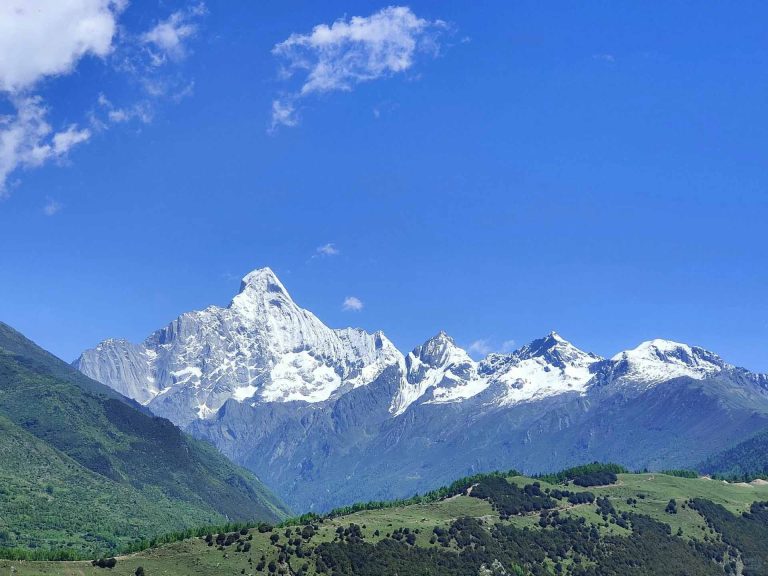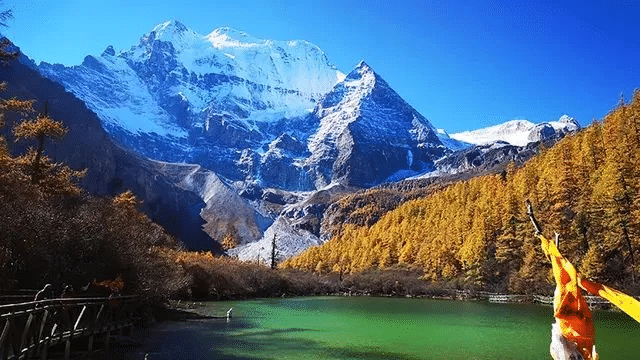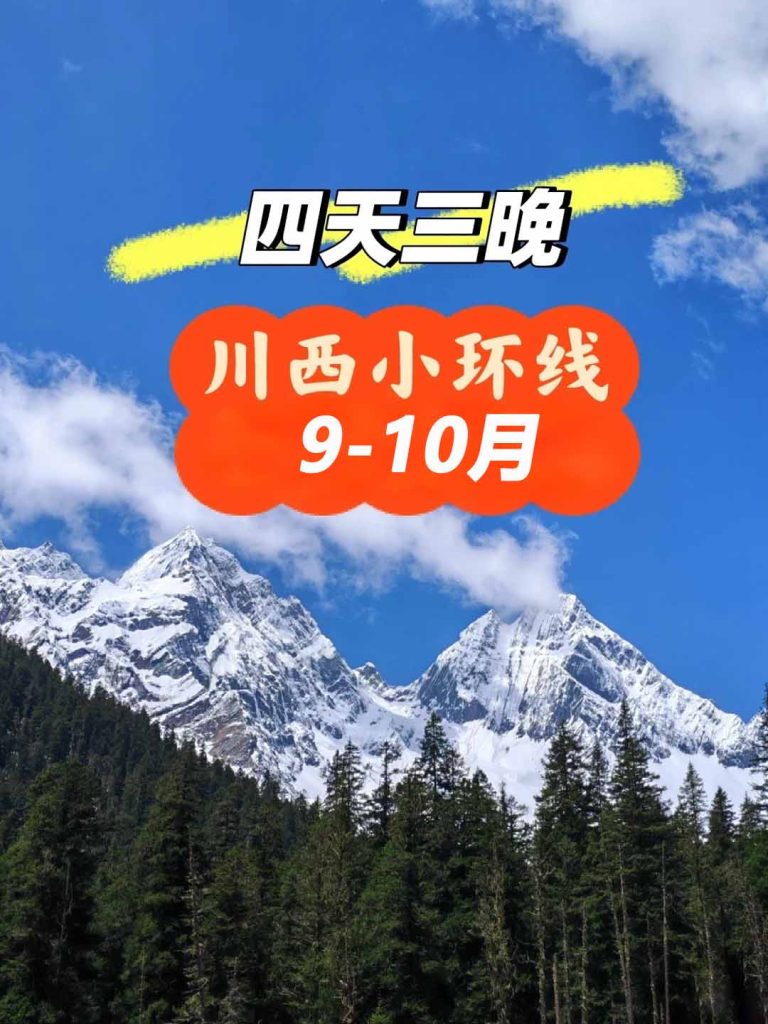The beauty of Western Sichuan is the intertwining of landscape and humanities, and the collision of nature and history. On this 7-day itinerary, we take Chengdu as the starting point to connect the thousand-year wisdom of Dujiangyan, the fantasy waterscape of Jiuzhaigou, and the wonderland of Huanglong Yaochi. Then we will encounter the innocence of giant pandas and the mystery of Sanxingdui to create an in-depth route that combines natural wonders and humanistic heritage. The itinerary optimizes the route planning to avoid redundancy, and the accommodation choice takes into account comfort and convenience. The surrounding area of Jiuzhaigou does not choose 4-diamond hotels, and replaces them with more cost-effective characteristic hotels, allowing you to immerse yourself in the whole process and feel the charm of Western Sichuan at ease.
Itinerary overview
This itinerary is based on the logic of “Chengdu is centralized and distributed, and the core attractions are connected in series”. The total mileage is about 1,500 kilometers, and the driving time between the attractions is controlled within 2-5 hours. The itinerary covers four core themes of world natural heritage, millennium water conservancy projects, national treasure habitats, and ancient Shu civilization ruins. The daily itinerary focuses on 1-2 core attractions, with sufficient play time and reasonable rest arrangements. In terms of accommodation, Chengdu has selected 4 Diamond hotels to ensure comfort, and characteristic hotels with perfect facilities and excellent location around Jiuzhaigou (about 10-15 minutes walk to the entrance of the scenic area), taking into account cost performance and convenience, and integrating local cuisine and cultural experience throughout the process to make the trip more textured.
Itinerary map
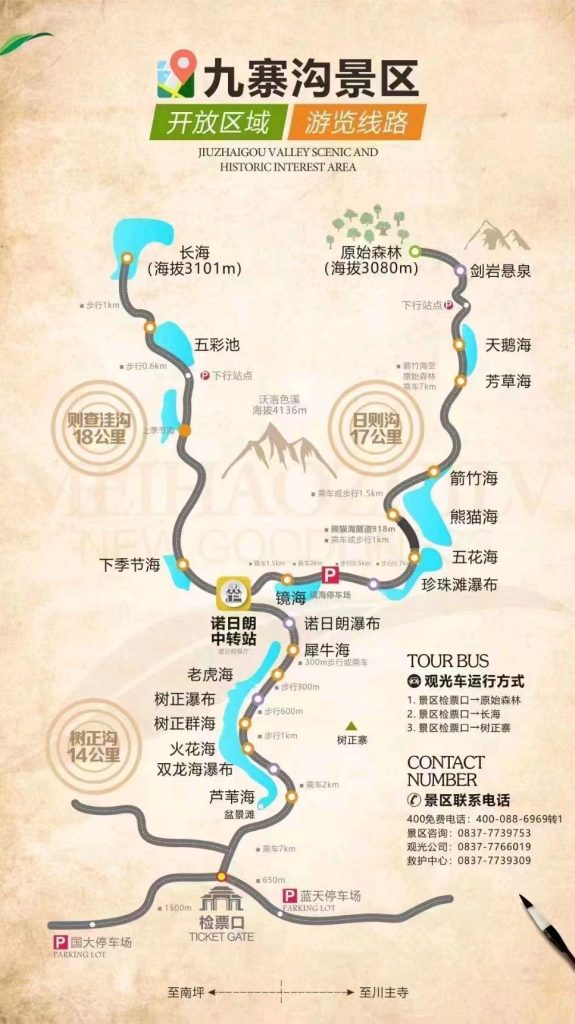
Detailed itinerary
Daily detailed itinerary
Day1: All over the country-Arrived in Chengdu·First encounter with Tianfu
[Itinerary]: Arrive at Chengdu Shuangliu Airport or East Railway Station on the meeting day, and pick up/pick up the station and take it to the 4 Diamond Hotel in the city for check-in. The afternoon and evening are free time, and can be flexibly arranged according to the arrival time. If you have plenty of time, you can check in and rest when you arrive in the morning. In the afternoon, you can go to Kuanzhai Alley to taste Gaiwan tea and watch Sichuan Opera. In the evening, you can take a night tour of Jinli and taste snacks such as three cannons.
[Dining recommendation]: You can have a light meal at the airport/station at lunch, and hot pot such as Hero Shu and Xiaolongkan are recommended for dinner. If you don’t want to eat spicy food, you can order Mandarin duck pot.
[Accommodation arrangements]: Hotels in Chengdu (the location is superior, close to the subway or business district, easy to travel).
[Travel tips]: Eat lightly after arriving in Rong, keep your luggage, and keep your mobile phone unblocked so that you can contact the pick-up/pick-up staff.
Day2: Chengdu-Dujiangyan Scenic Area*Millennium Wisdom→ Jiuzhaigou Surroundings·Stay in featured hotels
[Itinerary]: After breakfast, take a tour bus to Dujiangyan Scenic Area in the morning (about 1.5 hours by car), and your guide will lead you to visit core projects such as Yuzui and Feisha Weir, as well as Erwang Temple. At noon, I will taste slag slag noodles and white fruit stewed chicken near the scenic area. In the afternoon, I will take a tour bus to Jiuzhaigou (about 4.5 hours by car) to enjoy the changing scenery of the Western Sichuan Plateau along the way. After arriving in the evening, stay in characteristic hotels around the scenic area. In the evening, you can taste Tibetan cuisine and visit small shops.
[Dining recommendation]: Dujiangyan selects Slag Slag noodle restaurant for lunch, and Jiuzhaigou recommends Tibetan-style yak meat hot pot with local wild vegetables for dinner.
[Accommodation arrangements]: Characteristic hotels around Jiuzhaigou (with complete facilities, including en suite bathrooms, air conditioning, and free shuttle service to and from scenic spots).
[Travel tips]: Wear comfortable sports shoes to visit Dujiangyan. It is a long drive to Jiuzhai. You can prepare pillows, snacks and motion sickness medicine.
Day3: Jiuzhaigou Scenic Area· Full-day in-depth tour (free travel photography & afternoon tea) →Stay in characteristic hotels around Jiuzhaigou
[Itinerary]: After breakfast, walk to the entrance of Jiuzhaigou in the morning, and take a sightseeing bus to visit Rizegou Wuhuahai (including free travel shots), Jinghai, and Pearl Beach Waterfall. Have a meal at Nuorilang Restaurant at noon, take a break after the meal and enjoy a complimentary afternoon tea. In the afternoon, I visited the attractions of Changhai, Colorful Pond and Shuzhenggou in the Chachawagou, and returned to the hotel in the evening after leaving the scenic area.
[Dining recommendation]: You can choose Nuorilang buffet for lunch in the scenic area, and for dinner, you can choose a light Sichuan restaurant around the hotel to soothe your stomach and intestines.
[Accommodation arrangements]: Characteristic hotels around Jiuzhaigou (same as the previous night, no need to change, convenient luggage storage).
[Travel tips]: Keep your sightseeing tickets and wear bright-colored clothing for travel photos. You need to protect against strong ultraviolet rays in scenic spots.
DayDay4: Jiuzhaigou-Huanglong Scenic Area*Yaochi Wonderland→Return to Chengdu*Stay at 4 Diamond Hotel
[Itinerary]: After breakfast, take a tour bus to Huanglong Scenic Area in the morning (about 2.5 hours by car). It is recommended to take a cableway up the mountain and walk around, focusing on watching the Cahuacai Pools, waterfalls and other landscapes. Have a light meal in the scenic area at noon, take a break after the meal and continue to visit the remaining attractions. Take the tour bus back to Chengdu in the afternoon (about 6 hours by car), and check into a 4-star hotel in the city after arriving in the evening. After that, you can move freely to relieve fatigue.
[Dining recommendation]: Huanglong chooses light meals such as beef noodles for lunch, and tastes specialty snacks such as Mapo tofu for dinner after returning to Rong.
[Accommodation arrangements]: Hotels in Chengdu.
[Travel tips]: Huanglong has a high altitude, slows down and prevents high reflux, oxygen cylinders and glucose can be prepared; the weather in the scenic area is changeable and rain gear is provided.
Day5: Chengdu Giant Panda Base-Cute Interactive→Sanxingdui Museum*Exploring Ancient Shu→ Staying at Chengdu 4 Diamond Hotel
[Itinerary]: After breakfast, take a tour bus to Chengdu Giant Panda Breeding Research Base in the morning (about 1 hour by car). At this time, pandas are active. You can watch pandas of all ages and visit the Science Discovery Museum. Try a panda-themed meal near the base at noon, and take a tour bus to the Sanxingdui Museum in the afternoon (about 1.5 hours by car). A professional docent will lead a tour of the complex and the Bronze Museum. In the afternoon, after the tour, return to Chengdu City. After dinner, you can visit Chunxi Road.
[Dining recommendation]: Choose “Panda Kitchen” near the Panda Base, and recommend “Xiaolongfanjiang’ in Kuanzhai Alley for dinner.
[Itinerary tips]: Panda Base can take a sightseeing bus to save effort. Photography is prohibited in Sanxingdui. Follow the team when listening to the explanation.
Day6: Chengdu-Return to the place of departure·Successful return
[Itinerary]: Today is the return date, and it can be flexibly arranged according to the flight/high-speed rail time. If the return time is late, you can move freely in the morning. It is recommended to go to Manjushri Courtyard to feel the tranquility of the millennium ancient temple, and buy special souvenirs at the surrounding Manjushri square, such as Shu embroidery, bamboo weaving, and bean curd in Pixian County. You can also go to People’s Park and drink a cup of Gaiwan tea at Heming Tea House to experienceThe slow life of the old metropolis.
Meals are arranged at noon according to the return time. Meals can be eaten near the hotel or around the airport/station. The hotel will arrange check-out according to your return time. If you need to store your luggage, you can inform the hotel front desk in advance. After that, a dedicated person will drop off the plane/drop off at the station, go to the airport or station, take a flight/high-speed rail back to the place of departure, and end the trip to West Sichuan.
[Dining recommendation]: You can bring specialty snacks such as light shadow beef shredded to the return trip, and choose “Country Base” near the airport/station for lunch.
[Travel tips]: Arrive at the airport/station 2-3 hours in advance, check your luggage to avoid omissions, and pay attention to safety on the return trip.
Detailed introduction of core attractions
1. Dujiangyan Scenic Area
Dujiangyan is a world cultural heritage site and an important part of the World Natural Heritage Site (habitat of the giant panda in Sichuan). It is also a national key cultural relics protection unit and a national 5A scenic spot. It was built in the last year of King Qin Zhao (about 256 BC) and was presided over by Li Bing and his son, the prefect of Shu County. It is the oldest and only grand water conservancy project in the world that has been preserved and is still in use. It is characterized by damless water diversion. The core of the scenic area consists of three parts: Yuzui, Feisha Weir, and Baojinkou: Yuzui divides the Minjiang River into Neijiang and Waijiang, the Neijiang is used for irrigation, and the Waijiang is used for flood control; Feisha Weir can automatically discharge sand to avoid siltation of the Neijiang; Baojinkou controls the amount of water in the Neijiang and accurately introduces it into the Chengdu Plain. For more than two thousand years, Dujiangyan has been playing the role of flood control and irrigation, making the Chengdu Plain a “land of abundance” where “water and drought follow people and hunger are unknown”. There are also cultural landscapes such as Erwang Temple, Fulongguan, and Anlan Cable Bridge in the scenic area, which complement the water conservancy project and show the wisdom and merits of the ancients.
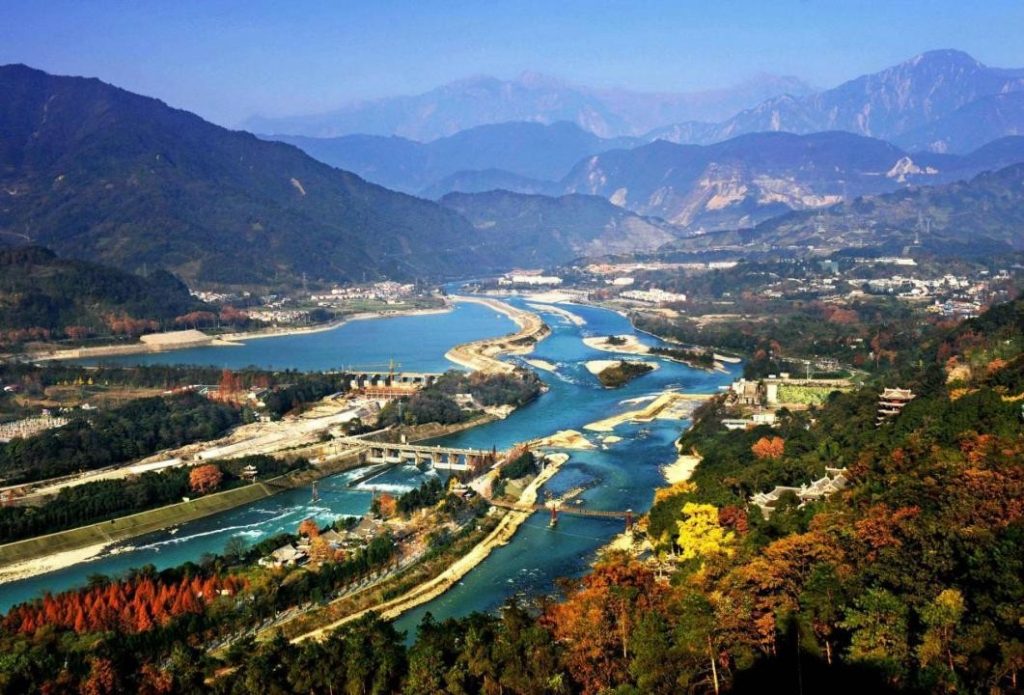
2. Jiuzhaigou Scenic Area
Jiuzhaigou is a world natural heritage site and a national 5A scenic spot. It is famous for “Jiuzhaigou returns without looking at the water”. It is located in Jiuzhaigou County, Aba Prefecture. It is named after nine Tibetan villages. The scenic area consists of three main ditches, Rizegou, Shuzhenggou, and Zechawagou. There are 114 high mountain Haizi, 17 waterfalls, and 5 calcareous beaches. The five-flower sea in Rizegou is colorful, with clear reflections from the mirror sea, and Pearl Beach waterfalls splashing; the Shizheng Waterfall in Shuzhenggou is wide and continuous, and the rhino Sea is quiet and deep; the Changhai in Zhawagou has the highest altitude and the largest area, with colorful pools. Small and colorful. Due to calcareous deposits, algae and vegetation, the water color of the lake is changeable in the sun, and the ecological environment is excellent. It is home to rare animals such as giant pandas.
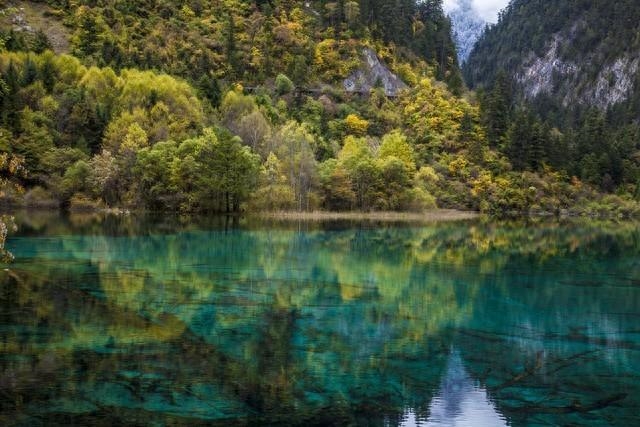
3. Huanglong Scenic Area
Huanglong is a world natural heritage site and a national 5A scenic spot. It is located in Songpan County, Aba Prefecture, about 100 kilometers away from Jiuzhaigou. It is known for its “Four wonders” of Caohuacai Pond, snow-capped mountains, canyons, and forests, and is known as the “Yaochi on Earth”. The core of the scenic area is more than 3,400 calcareous colorful pools, arranged in terraces along the Huanglong Valley, and winding like a golden dragon from a height, hence the name “Huanglong”. The color pool is affected by mineral content, algae and light, showing yellow, green, blue and other colors. In addition, there are attractions such as Huanglong Ancient Temple, Flying Waterfall Liuhui, and Jinsha Paving. Huanglong Ancient Temple was built in the Ming Dynasty. Jinsha paving is a 1.3-kilometer-long calcareous flow, shining golden under the sun. The altitude of the scenic area is 3000-3600 meters, and the ecology is fragile and precious. It is an important ecological barrier in the eastern part of the Qinghai-Tibet Plateau.
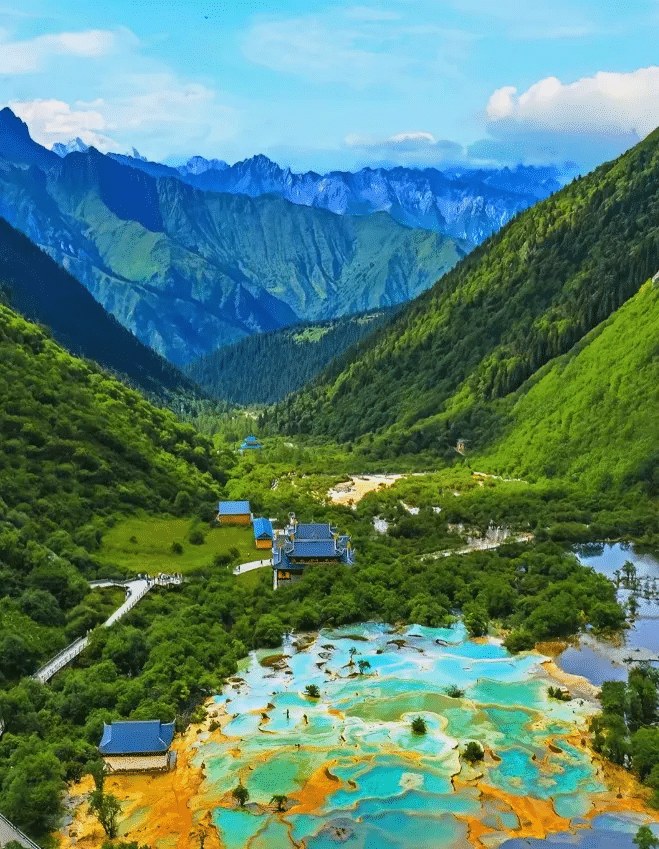
4. Chengdu Giant Panda Breeding Research Base
Chengdu Giant Panda Breeding Research Base is a national 4A-level scenic spot, located on Panda Avenue in Chenghua District, and is the core research base for the ex situ protection of giant pandas. It was founded in 1987 and covers an area of about 3,570 acres. It now raises more than 100 giant pandas, making it the institution with the largest number of giant pandas in captivity in the world. The base is divided into areas such as juvenile, sub-adult, adult giant panda villa and Science Exploration Museum. You can watch the status of pandas eating and playing up close. The Science Exploration Museum displays the achievements of panda evolution, breeding and protection through pictures, texts, specimens, etc. The vegetation coverage rate of the base is 96%. In addition to pandas, it is also home to rare animals such as red pandas. It is an excellent place for parent-child and popular science tours.
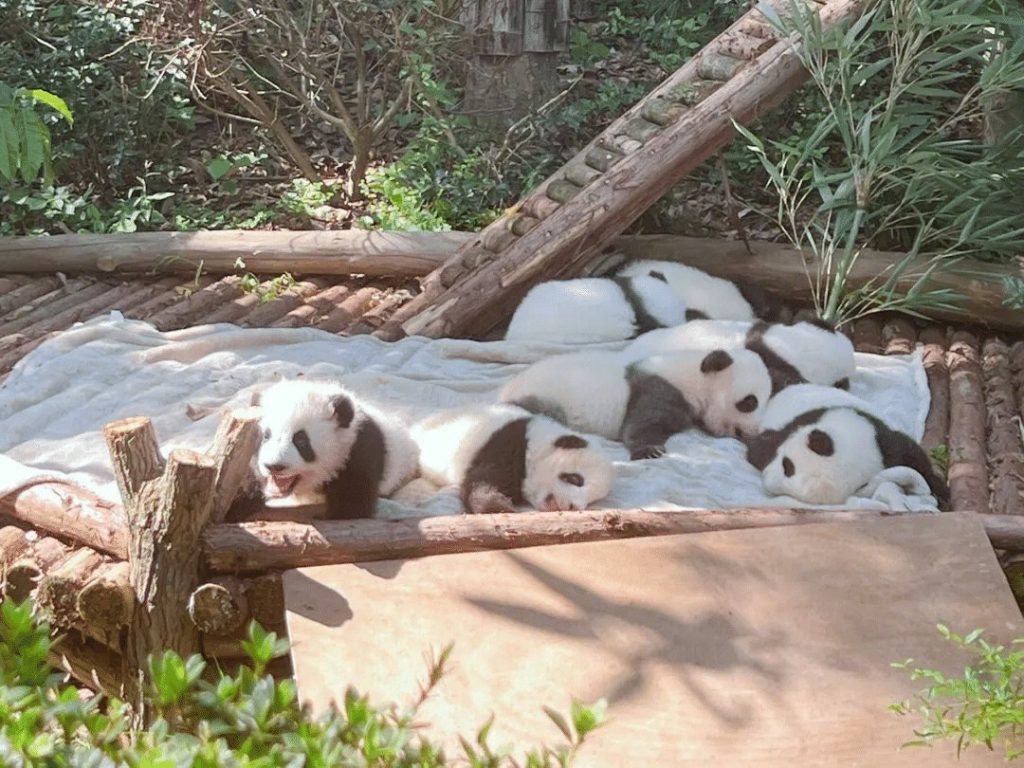
5. Sanxingdui Museum
The Sanxingdui Museum is a national 4A-level scenic spot, located in Guanghan City, Deyang. It was built on the ruins of Sanxingdui and is a modern special site museum. The ruins of Sanxingdui are the largest, longest-lasting and richest ancient Shu cultural sites in the Southwest, dating from 5,000 to 3,000 years ago. The museum is divided into a general museum and a bronze museum, with a collection of nearly 10,000 cultural relics. The bronze sacred tree, Daliren, Zongmu mask, golden staff, etc. can be called national treasures. The peculiar shape and exquisite craftsmanship of the cultural relics are obviously different from the bronze culture of the Central Plains, proving that the Yangtze River Basin is an important birthplace of Chinese civilization. The comprehensive museum displays archaeological history and various cultural relics. The Bronze Museum focuses on bronze cultural relics and interprets the religious beliefs and technical level of ancient Shu. There are also interactive experience areas and other facilities in the museum.
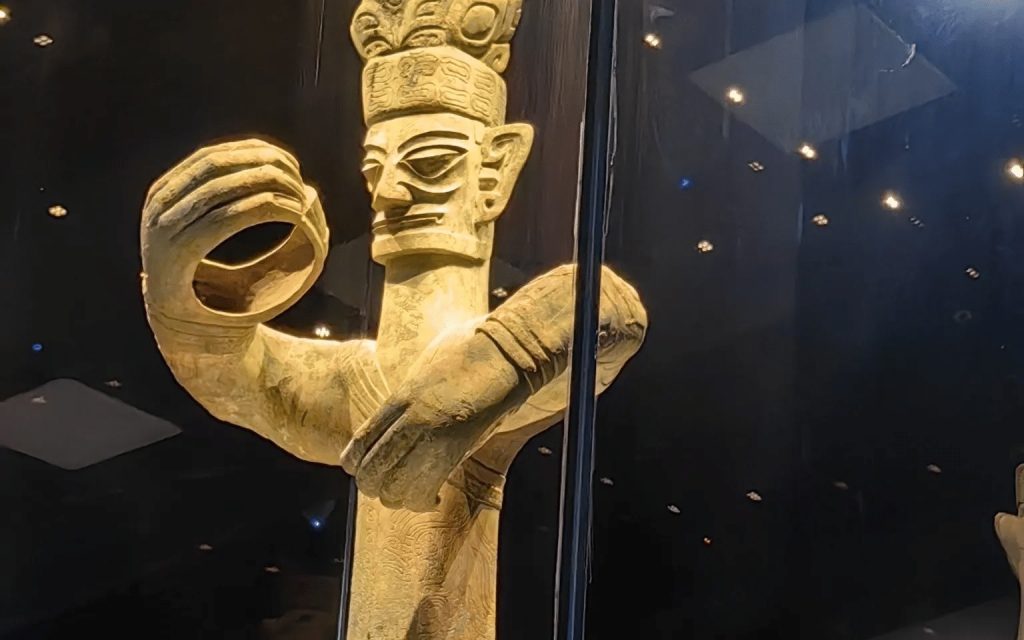
Travel precautions
- Clothing preparation: The altitude of Western Sichuan is high, and the temperature difference between day and night is large. Even in summer, you need to bring a coat and long trousers; autumn (around October) is the best viewing period of Jiuzhai Cailin, you need to bring sweaters, down jackets and other warm clothing; winter temperatures are extremely low, you need to prepare heavy down jackets, snow boots, scarves,Gloves, etc. In addition, there are many hiking sections in the scenic area, so it is recommended to wear comfortable sports shoes.
- Sun protection and moisturizing: Ultraviolet rays are strong in Western Sichuan, so you need to bring high-strength sunscreen (SPF50+), sun hats, sunglasses, masks and other sun protection products; the climate in the plateau area is dry, you need to bring moisturizing lotion, lipstick, hand cream and other moisturizing products, drink plenty of water to replenish moisture.
- Altitude sickness response: Jiuzhaigou is about 1900-3100 meters above sea level, and Huanglong is about 3000-3600 meters above sea level. Some people may experience altitude sickness. Avoid colds before departure and avoid strenuous exercise; you can take rhodiola rosea and other medicines to prevent altitude sickness 3-5 days in advance; slow down your movement after arrival, rest more, and avoid drinking and smoking; if you have symptoms such as headache, dizziness, and shortness of breath, you can take highland An and glucose oral liquid, which are timely in severe cases.Seek medical attention.
- Itinerary planning: Jiuzhaigou, Huanglong and other scenic spots have a large area. It is recommended to understand the map of the scenic area in advance and plan the route to play; sightseeing buses in the scenic area have fixed stops, and the rules for riding must be followed; some sections of the road are single-lane, please do not go retrograde. There are more tourists in scenic spots during the peak season (April-November). It is recommended to purchase tickets online in advance to avoid queuing on site.
- Folk etiquette: There are many Tibetan settlements in Western Sichuan, and local folk customs must be respected. When entering a Tibetan Buddhist temple, you need to take off your hat, take pictures (except with permission), and do not touch the Buddha statue at will; be friendly when communicating with locals and avoid talking about sensitive topics; do not enter the Tibetan tent at will, you need to obtain permission from the owner before entering.
- Environmental protection requirements: The ecological environment in Western Sichuan is fragile. Please do not litter when playing and put the garbage in designated trash cans; do not pick flowers and plants or destroy vegetation at will; abide by scenic regulations and do not enter undeveloped areas to play.
Safety tips
- Traffic safety: Some sections of Western Sichuan are mountain roads with many corners. Please fasten your seat belts when riding and do not stick your head and hands out of the window at will; do not take unqualified black cars or carpool, choose regular tourist buses or taxis; self-driving trips need to check the condition of the vehicle in advance, be familiar with the road conditions, and abide byTraffic rules to avoid fatigue driving.
- Scenic area safety: There are many plank roads and steps in the scenic area. Pay attention to your feet when hiking to avoid slipping; when approaching waterfalls, Haizi and other landscapes, follow the warning signs of the scenic area and do not climb over the guardrail to avoid falling accidents; in thunderstorm weather, avoid staying in open areas and high places, and do not use electronic devices such as mobile phones.Stay away from trees, telephone poles, etc.
- Personal safety: Please travel together when playing, and do not go to remote areas alone; keep your personal belongings, be wary of strangers to strike up a conversation, and avoid being deceived; try not to go out alone at night. If you need to go out, please inform your peers and choose a well-lit section.
- Medical protection: Bring commonly used medicines, such as cold medicines, gastrointestinal medicines, antipyretics, band-aids, etc.; Understand the locations of hospitals and pharmacies in and along the scenic area, and seek medical attention in time if you are unwell; Medical conditions in plateau areas are relatively limited, and patients with serious illnesses are recommended to go with caution.
- Emergency contact: Keep important contact information such as scenic area service numbers, hotel numbers, and peer numbers; in case of emergency, dial 110 (alarm), 120 (first aid), 119 (fire fighting) and other emergency numbers in time.
End: A thousand-year covenant in Western Sichuan
When the Haizi of Jiuzhai reflects the first ray of morning light, when the colorful pool of Huanglong turns colorful in the sun, and when the wind of the grassland blows across your cheeks with the fragrance of grass, you will understand that the beauty of Western Sichuan is the poetry hidden in the landscape, and the heavyness engraved in the culture. In these 7 days, we don’t have to run around for a long journey, we just need to step into the secret realm of Western Sichuan, fill our eyes with scenery and fill our hearts with emotion. Whether it’s traveling alone to find yourself, or sharing time with relatives and friends, Western Sichuan will leave you with the most precious memories. Don’t wait any longer, pack your bags, and go to this millennium covenant with Western Sichuan. Let the beauty and customs become the most moving chapter in your life!
If you want to continue to explore more attractive places, our team of professional travel consultants can serve you. The consultants are familiar with the attractions, terroir and popular routes in various regions of the mainland, and can tailor exclusive trips according to your preferences, budget and time, so that the journey is full of surprises.
Don’t hesitate, contact our travel consultant!


Contact information



